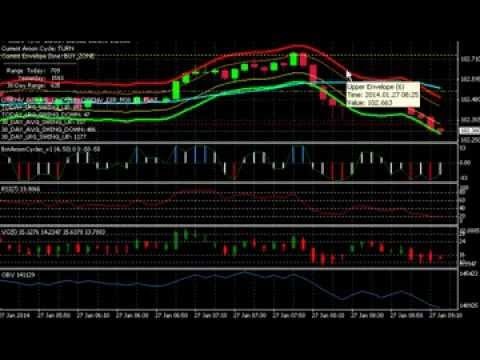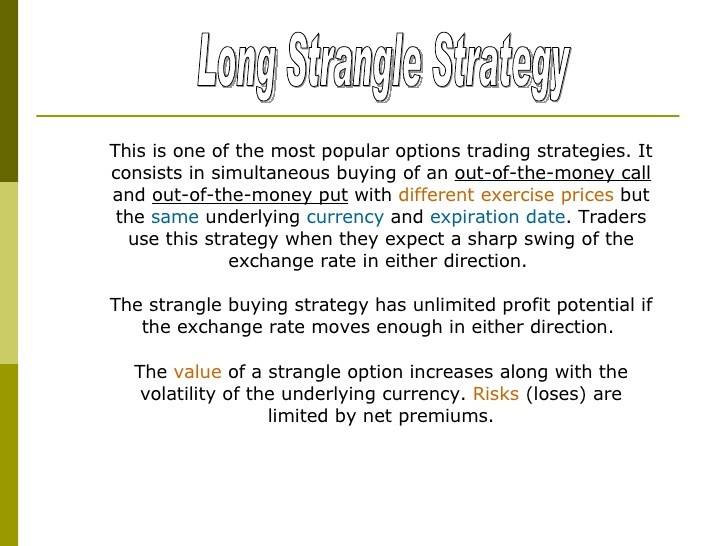3 LowCost Option Strategies for Stock Market Speculation
Post on: 12 Май, 2015 No Comment

by Darwin on October 29, 2009
While stock market speculation is frowned upon by many main stream investors and journalists, options strategies that seek to exploit market volatility or complacency can reward investors handsomely under the right conditions. There is a fine line between speculation and hedging though, right? Airlines hedge their fuel costs (heck, I hedge energy costs for our family), multinationals hedge their currency (which has been especially important given recent currency volatility ), and investors like myself hedge against a market downturn following an unprecedented 60% runup in equities with options (see How Stock Options Work ). Are all these hedging examples really just speculation? If oil prices drop, that airline loses all the money it spent on those forward futures protecting against oil spikes. Does it really matter?
What does matter to me is that most novice investors start off on the losing end of options strategies because theyre chasing speculative returns without fully understanding the implications of the transaction theyre entering into. Depending on the exchange and timeframe youre referring to, the prevailing data suggests that
70%-80% of all options held to expiration actually expired worthless . This is grim news for enthusiastic neophytes looking to turn $400 into $4000 because they overheard some hot stock tip. The overarching message is that theres no free ride. If it were that easy to make 10 times your money in a month, efficient market arbitrage would ensure returns would drop and retail investors would never gain an edge over the pros. So, rule #1 dont think youre smarter than everyone else and think youre going to get rich with stock options in general. However, there are occasional special situations like when I predicted a buyout the day before it happened and the options contracts I recommended returned 6,000% overnight . Of course, Im not too proud to admit that the dope I was, I didnt follow my own advice and buy the options and I missed out on turning $400 into $24,000 overnight. But, once in a while, retail investors have a good call or want to only dabble with 50 bucks instead of 500 to speculate on a particular market move.
That being said, investors are going to speculate. However, they often speculate on those 80% of options that expire worthless. They often buy out of the money calls on the cheap looking for a big pop. Example: Apples recent earnings announcement speculators thinking that Apples earnings were going to blow away the estimate were met with disappointment when the shares barely broached $200 and now theyre dipping below if they bought out of the money November 210 Calls. Those calls may very well expire worthless.
If youre going to engage in speculation in hedging whatever you want to call it, would you trade off some of the possible unlimited upside gain for a much lower cash outlay . or even a net neutral cash outlay? What Im saying is, you can employ stock option strategies for much less money than the several hundred dollars it usually costs to buy at the money or close to the money puts and calls outright. Here are a few methods and examples with different mechanisms but similar concepts less cash out, respectable return potential, fewer hard feelings when the option strategy doesnt pan out as you had hoped.
Hypothetical Speculative Option Strategy
Example Stock: Amgen (AMGN)
Current Share Price: $54
Situation: It is in the public domain that in early January, the FDA will be ruling on a much anticipated monoclonal antibody that has blockbuster potential. Theres a relative quiet period expected for the next couple months until the ruling. While the safety data is so-so, the efficacy is off the charts. If the therapy is approved, it could easily become a front line therapy and analysts anticipate peak sales of $7 Billion. Therefore, in the near term, there isnt expected to be much volatility since the data has already been digested by analysts on the street and the FDA submission is under review. However, with a ruling on the submission expected in January, you expect that shares could rally substantially in early January, before options expiration on the third Friday of the month.
The novice investor may buy 5 option contracts with a Jan expiry and $55 strike for 2.65 ea = $1325
However, by employing some of the lower cost option speculation strategies below, an investor could enjoy a decent return for a much lower cash outlay, in one case, even if shares dont reach $55.
Hows $1325 Sound vs.
1. Stock Option Strategy for Speculation #1 Debit Spreads
Investor buys and sells the same number of options contracts simultaneously and limits upside, but decreases cash outlay:
- Buy 5 contracts January $55 strike @ 2.65 ea while Selling 5 contracts January $60 strike @ .95 ea
5*(2.65-.95)*100 = $850
Max Cash Back is $2500; any run over $60 is capped.
Max Profit = $2500-$850 = $1650
Max ROI
Commentary: If said investor feels the stock wouldnt run much past $60 anyway, why pay 2.65 per position instead of 1.7 per position? Only downside risk is the initial outlay if options expire worthless $850.
2. Stock Option Strategy for Speculation #1 Ratio Spreads
Investor buys 1 Call near the money and sells 2 Calls further out to offset the price of the 1 they bought. Very low initial cash outlay BUT risky, in that there is unlimited loss if shares run uncontrollably since investor sold more calls (2) than they hold long (1).
-Buy 5 contracts January $55 strike @ 2.65 ea while Selling 5 contracts January $60 strike @ .95 ea
5*(2.65-2x.95)*100= $375
Max Cash Back is $2500; any run over $60 can initially still be a net profit, but after a few dollars, losses start to add up model this out like I did and understand your risk if considering this strategy . See my real-life example of a ratio spread (or 2by1 put spread) I employed to hedge against a market downturn in the S&P500 for demo whereby my max return was 2200% on a $42 outlay.

Max Profit = $2500-$375 = $2125
Max ROI
3. Stock Option Strategy for Speculation #1 Calendar Spreads
Investor Sells calls at a particular strike for a close month while buying calls at a later month for slightly more (due to time value) and hopes that the front month option expires worthless while adequate value still remains on the outer month long option. If shares run up early, its still possible to break even or make a profit since both options have value. If shares drop (and implied volatility as well), its possible both will expire worthless and the initial investment is lost.
- Sell 5 contracts on Dec 55 Call @ 2.05 ea and Buy 5 contracts on Jan 55 Call @ 2.65 ea
5*(2.65-2.05)*100 = $300
This could play out a few ways. If shares are still trading at say, $54 in December at expiry, the initial December options expired worthless, but investor still holds long January 55s which still have value. While impossible to predict exactly, Ill assume $113 each since thats the current Nov expiry and its now late Oct. These 5 could be sold for $113*5 = $565
Another way this may play out is that shares dip to 50 by December expiry, investor holds the long 55s Jan awaiting the approval and shares spike to $62. In January, they could then be sold for the $7 intrinsic price plus time value (say, at least $1) for 800*5 = $4,000
Lets base on more likely scenario though where the front month options expiry worthless and the January options are still close to the money.
Max Profit = $565-$300 = $265
Commentary: This is good for range bound trading or an anticipated leap out in January such as the situation described in the example. Allow the front month sold call to expire worthless and then sell the long call remaining.
These are just a couple examples based on a hypothetical situation. The permutations are infinite and investors should both model out the situation theyre considering and also FULLY Understand Their Risk before entering into any option strategy. You could actually take on ratio spreads that are net even by assuming even more risk, or you could take on debit spreads with a larger cash outflow but with higher ROI potential. Its really up to you to determine the situation, assess whats likely to happen with a stocks volatility, the likelihood of the binary event youre considering and whether range-bound trading is likely over a relatively long period of time (a lot can happen in a few months).
So, what are your thoughts? Was it worthwhile discussing these strategies? Have you tried any of them?














